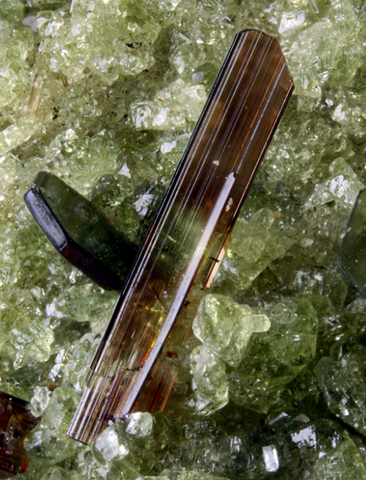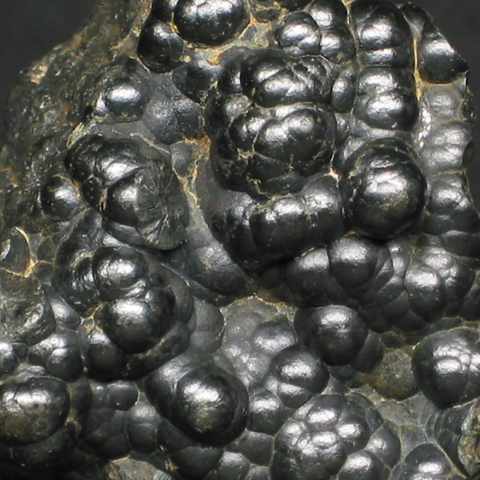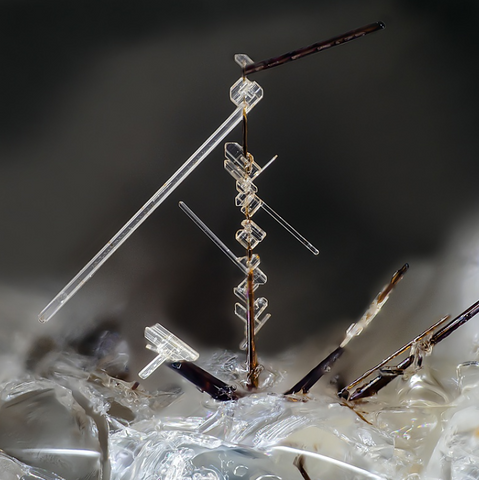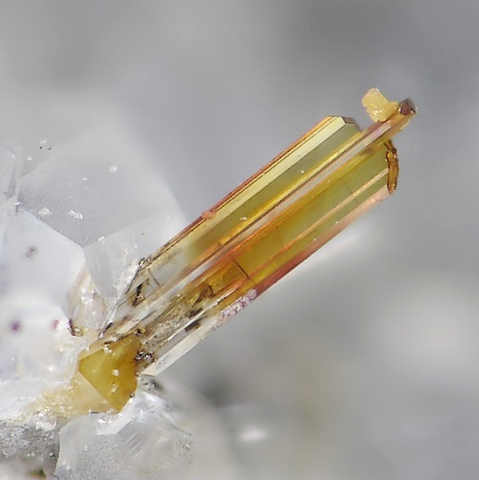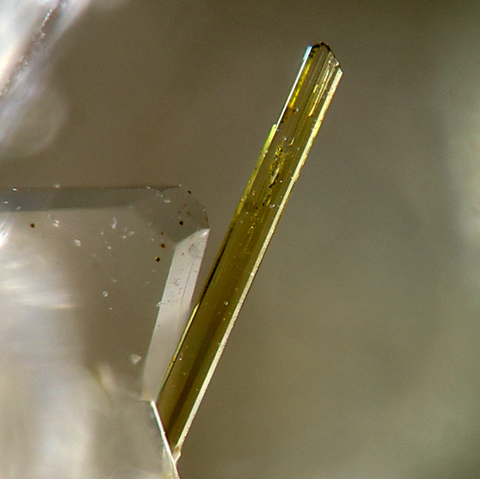 Baddeleyite - Encyclopedia
Baddeleyite - Encyclopedia
Class : Oxides and hydroxides
Subclass : Oxides
Crystal System : Monoclinic
Chemistry : ZrO2
Rarity : Rare
Baddeleyite is the natural oxide of zirconium. It is a rare mineral in rocks with a high silica deficit, from nepheline syenites and carbonatites to kimberlites and anorthosites. Baddeleyite is unalterable and is concentrated in alluvial deposits where it can constitute important placers. It owes its name to Joseph Baddeley who discovered it in 1890 at Kollonnagam in Sri Lanka. The crystals are rare and of varied habitus : slightly elongated tabular, stocky or elongated prismatic, rarely isometric. Baddeleyite is especially common in small fibroradiated or fibrous botryoidal masses, usually black in color, but which can present a wide range of colors (yellow, green, brown, colorless, etc.). Baddeleyite placers are one of the world's largest reserves of zirconium.
Main photo : Baddeleyite From Mount Somma, Naples, Italy © Chinellato Matteo
Baddeleyite in the World
Twinning and special crystallizations
Twins are ubiquitous in this species on {100} and {110}, both of which may be polysynthetic, however they are rarer on {201}.
Fakes and treatments
No fake or treatment identified for this mineral species.
Hardness : 6.5
Density : 5.4 to 6
Fracture : Irregular
Trace : White to brown
TP : Opaque to transparent
RI : 2.130 to 2.200
Birefringence : 0.070
Optical character : Biaxial -
Pleochroism : None
Fluorescence : None
Solubility : Insoluble
Magnetism : None
Radioactivity : None

